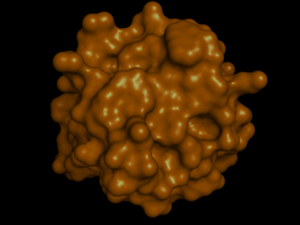Endoplasmic reticulum thioredoxin superfamily member
Abstract
The protein of interest for this research project was an endoplasmic reticulum thioredoxin superfamily member with an abbreviated name of ERp18 (short for 'endoplasmic reticulum protein with molecular weight of 18 kDa'). Study of ERp18 was broken into three areas: evolution, structure, and function. The evolutionanry analysis suggested that the ERp18 protein is unique to multicelluar organisms and in that group is quite highly conserved. What also may be concluded is that the ERp18 is part of a unique familiy of proteins which belongs to a larger 'superfamily' of thioredoxin proteins and contains the specific active site motif CGAC motif. Further analysis is needed to dertermine proteins containing the CXXC active motif have a common ancestor, or if the motif has evolved convergently in several classes of protein. Structural analysis supported ERp18's classification as a thioredoxin-like protein. 3D modelling identified a catalytic site pertaining to an area of high evolutionary conservation. This catalytic site contained a CXXC residue motif - ubiquitous of thioredoxin superfamily proteins. Furthermore, binding pockets were identified at the catalytic site by several bioinformatics programs. A DALI search identified numerous thioredoxin and thioredoxin-like proteins as being structurally similar, supporting the classification of ERp18 as a thioredoxin. Furthermore, information about the conformation and folding of ERp18 identified a thioredoxin fold. Recent literature has identified ERp18 as a dimer with a single protein molecular weight of 16.4 kDa, leading to the renaming of ERp18 as ERp16. The functional analysis of ERp18 suggests that it acts a thiosulifide oxidoreductase involved in inhibiting stress induced apoptosis. The structural evidence alongside experimental evidence, taken from literature, indicates that ERp18 belongs to the thioredoxin superfamily, however the unique active site motif sees the protein independent of the existing superfamily groups. Profunc was used to obtain data on gene expression which indicated that ERp18 is highly expressed in mice in embryonic cell lines, pancreases cell lines and bone marrow macrophage. This is slightly different to the expression in human cells as presented in literature and the different analytical methods are discussed. The human SAGE method was found to be the more reliable method.
